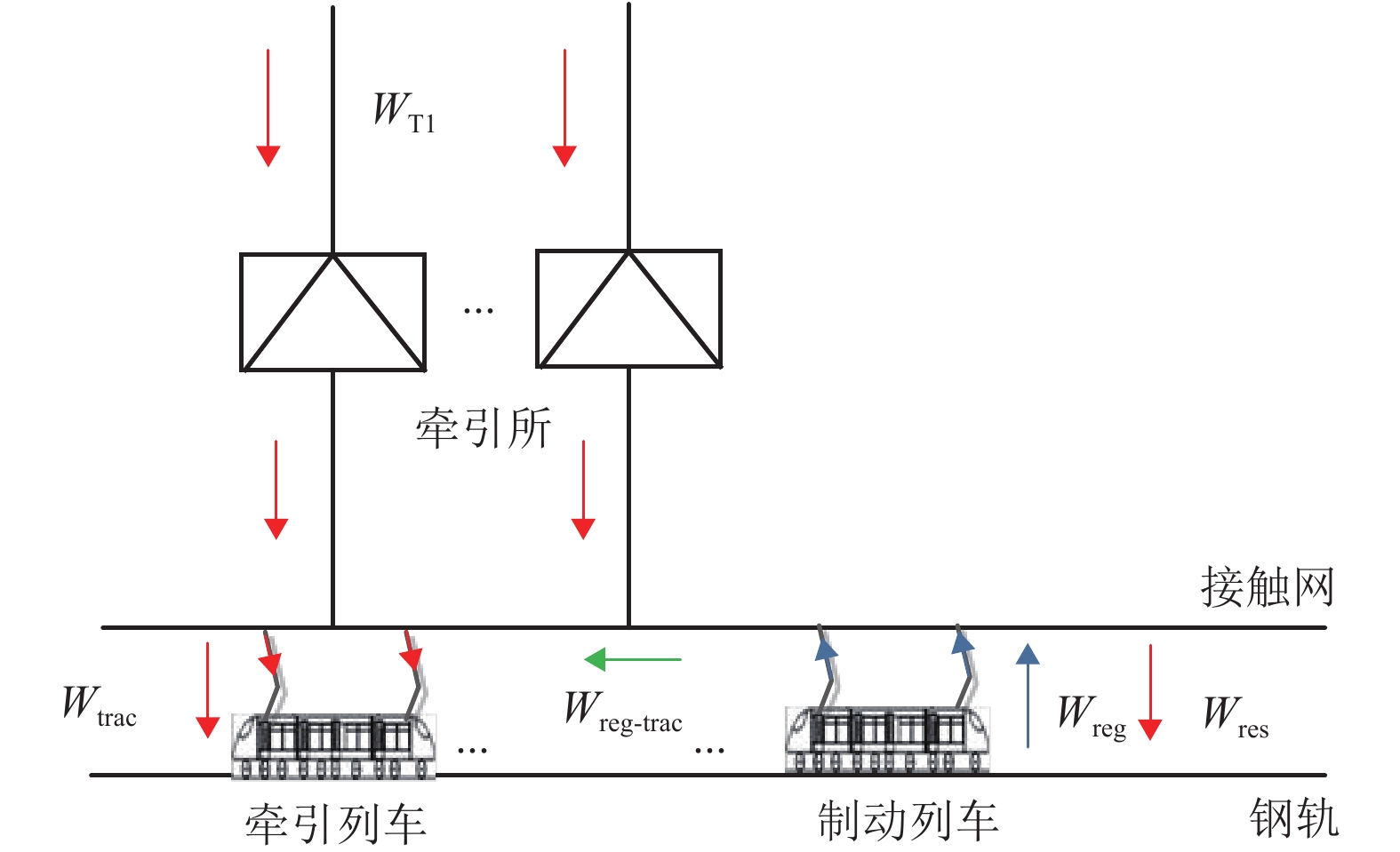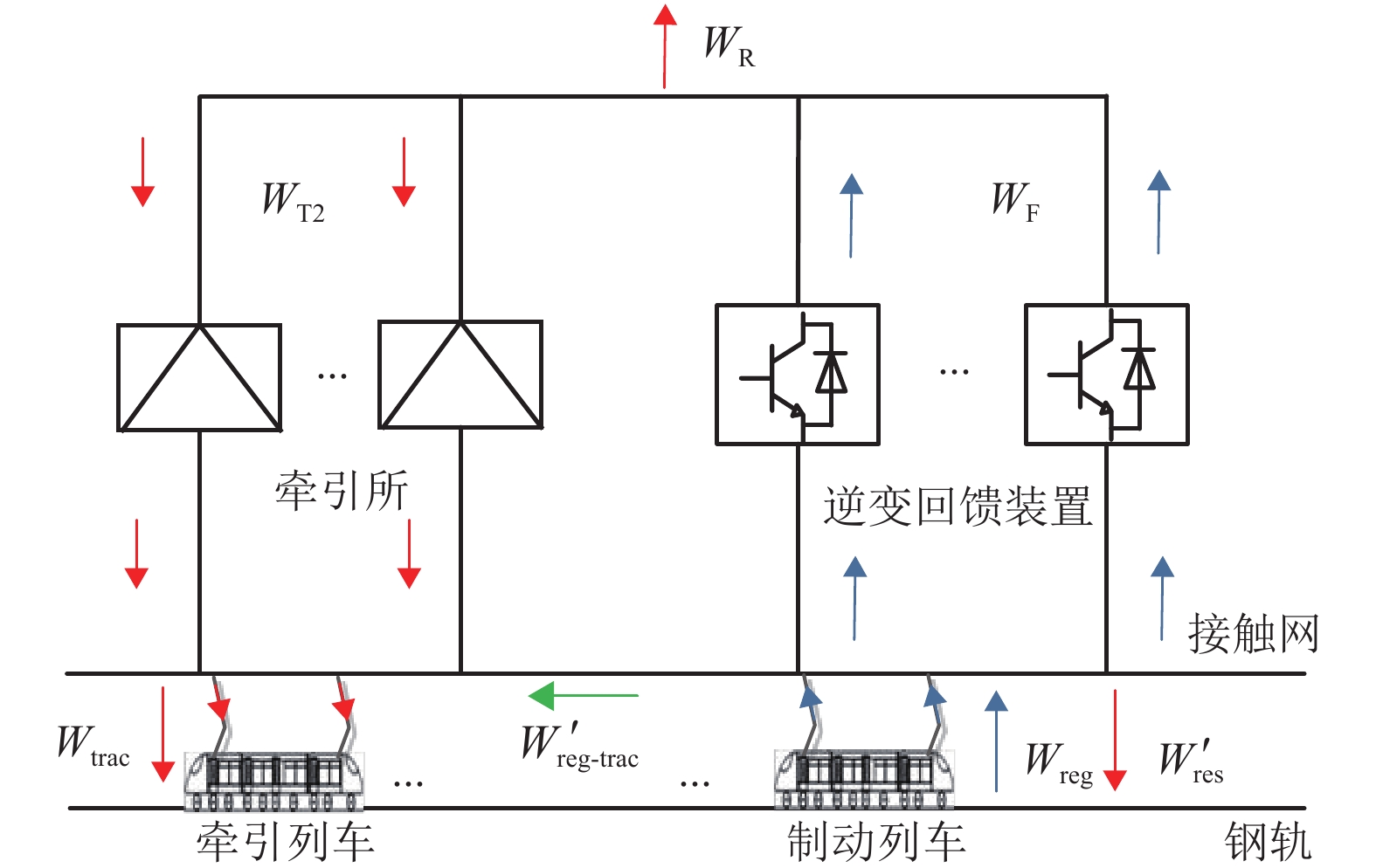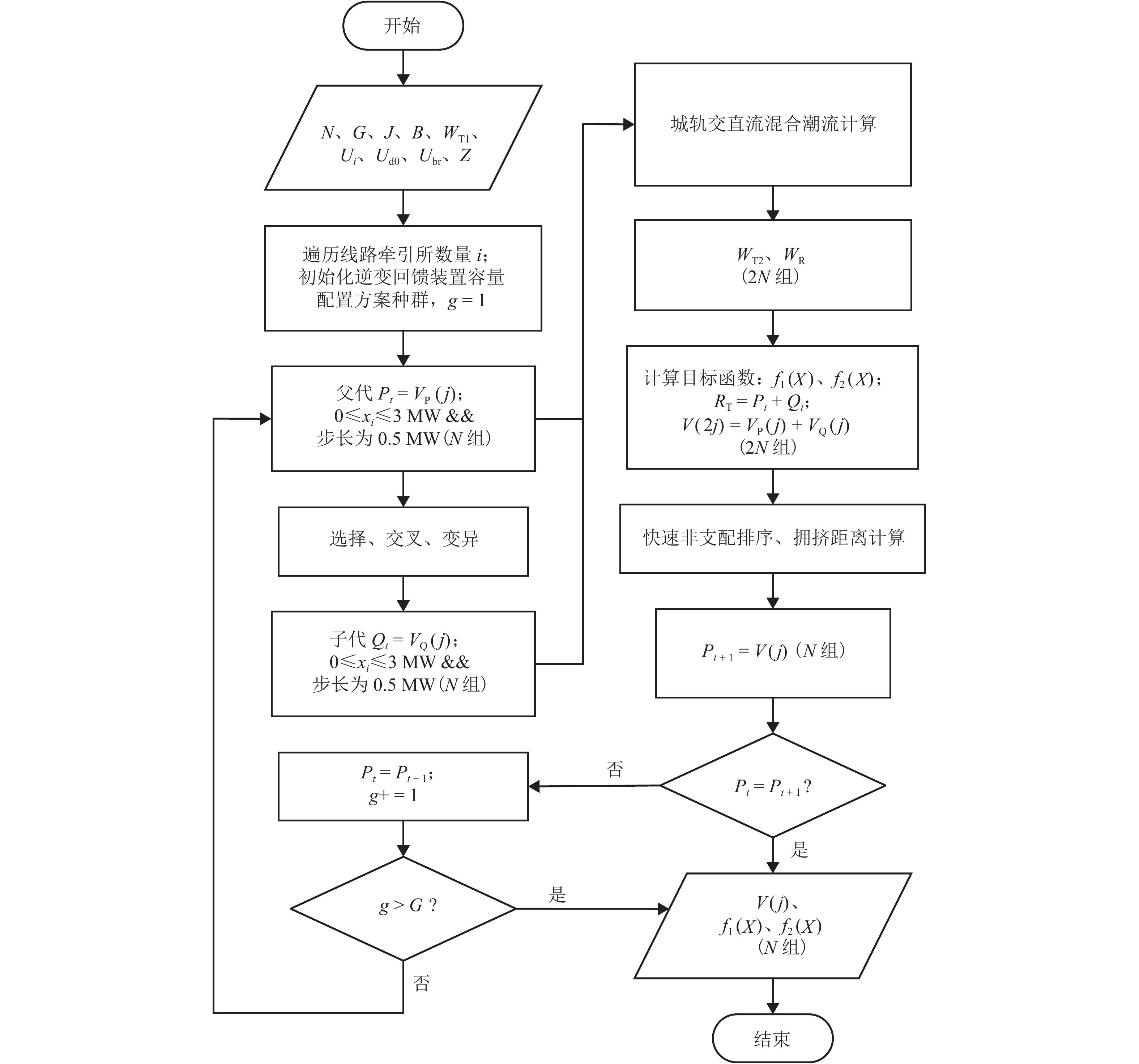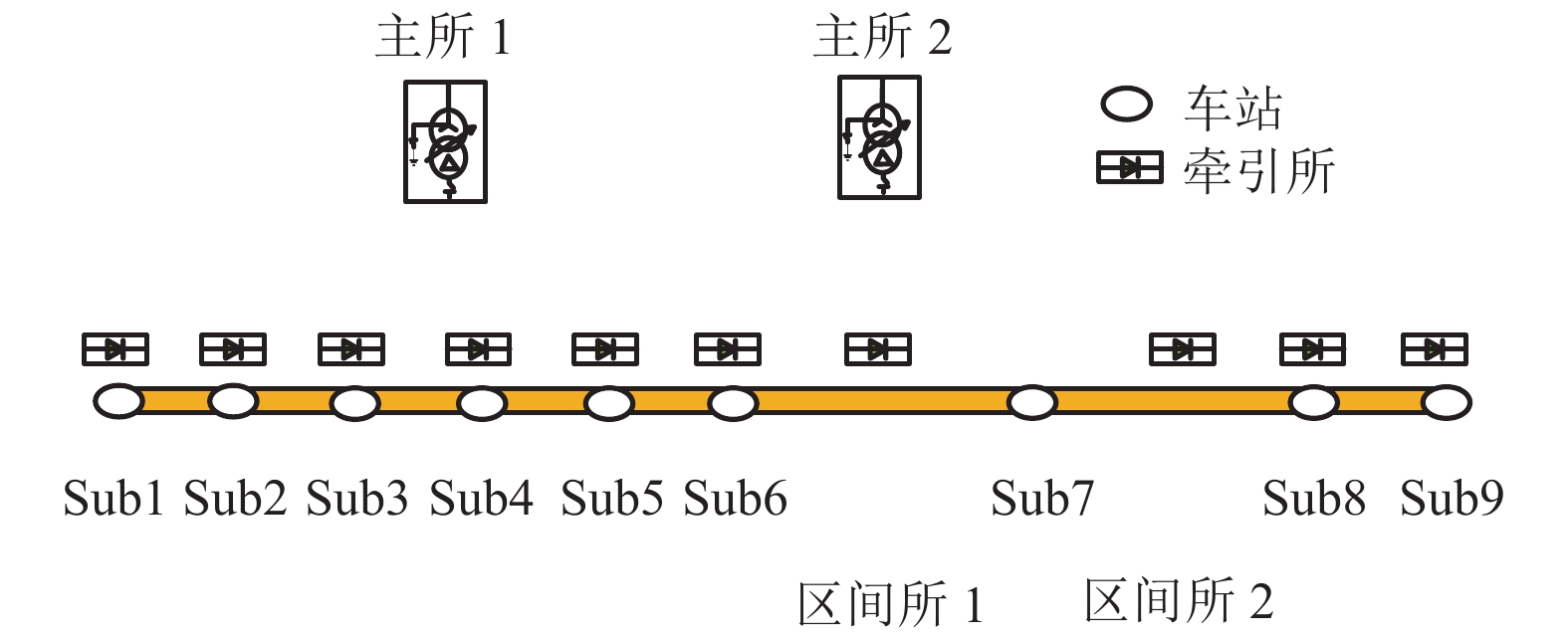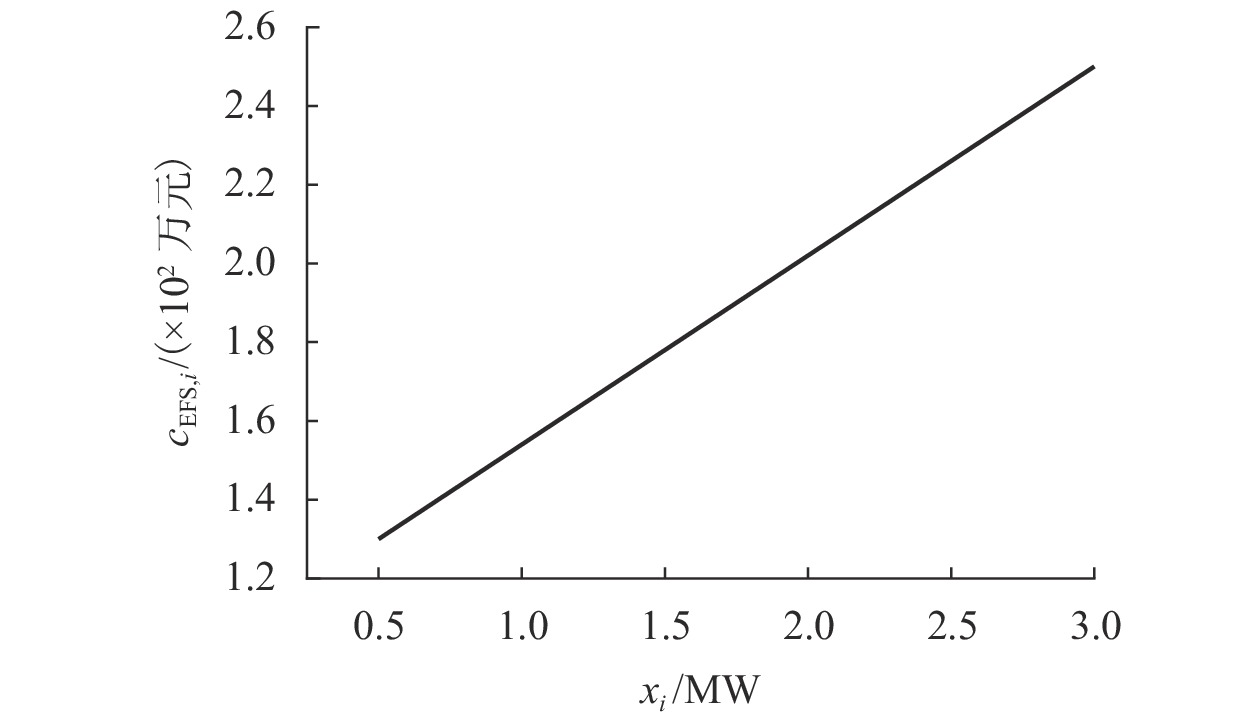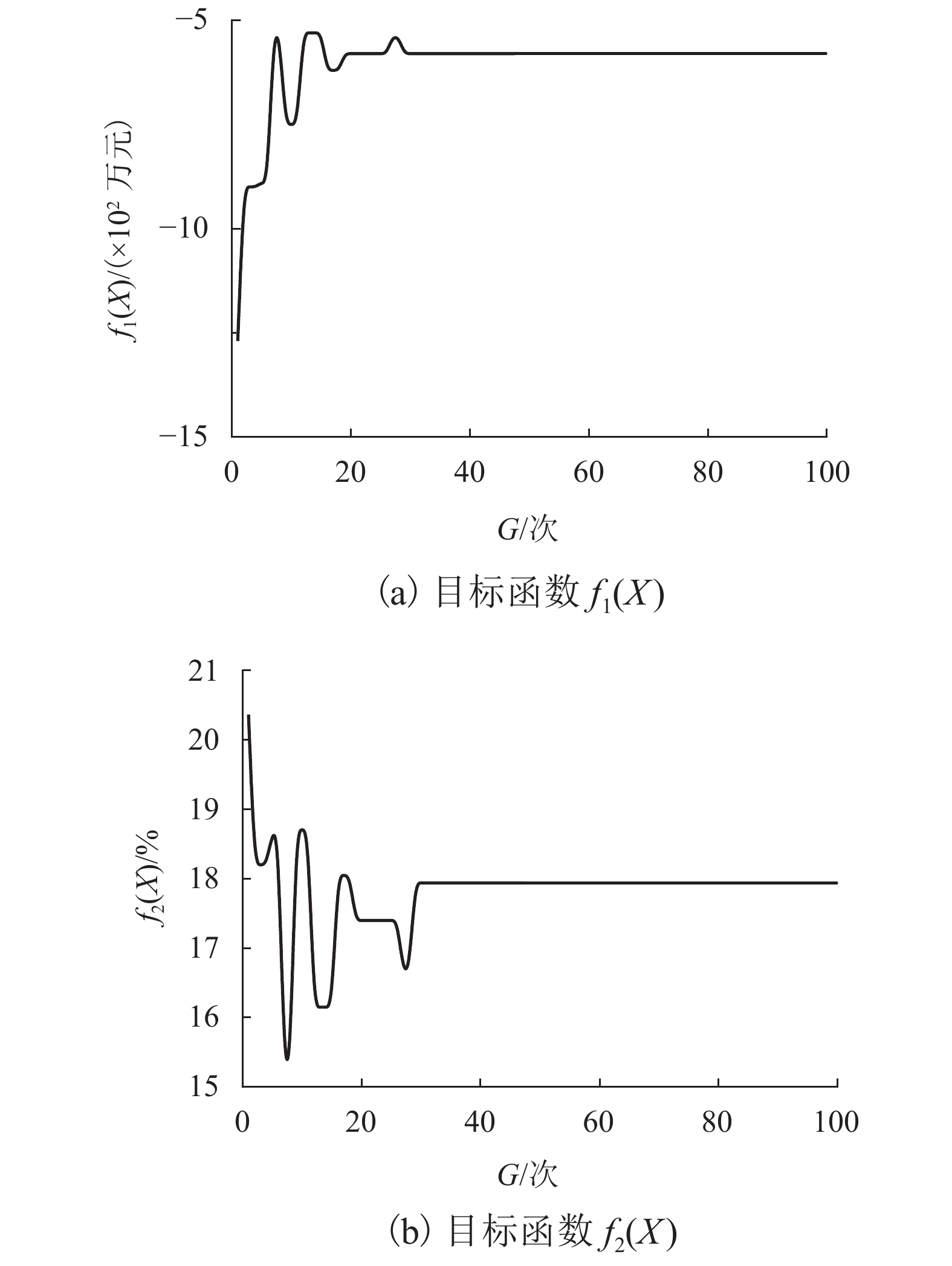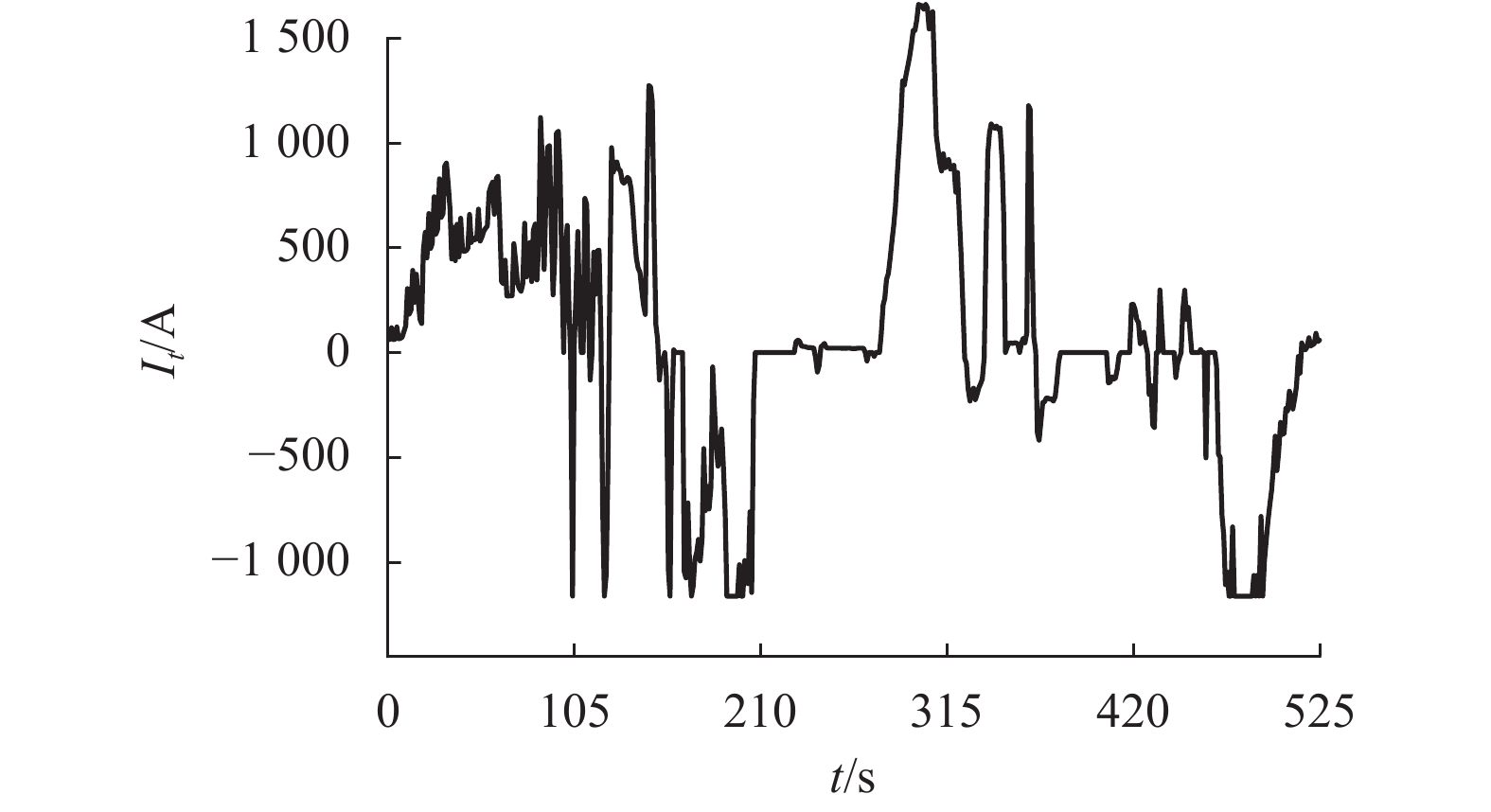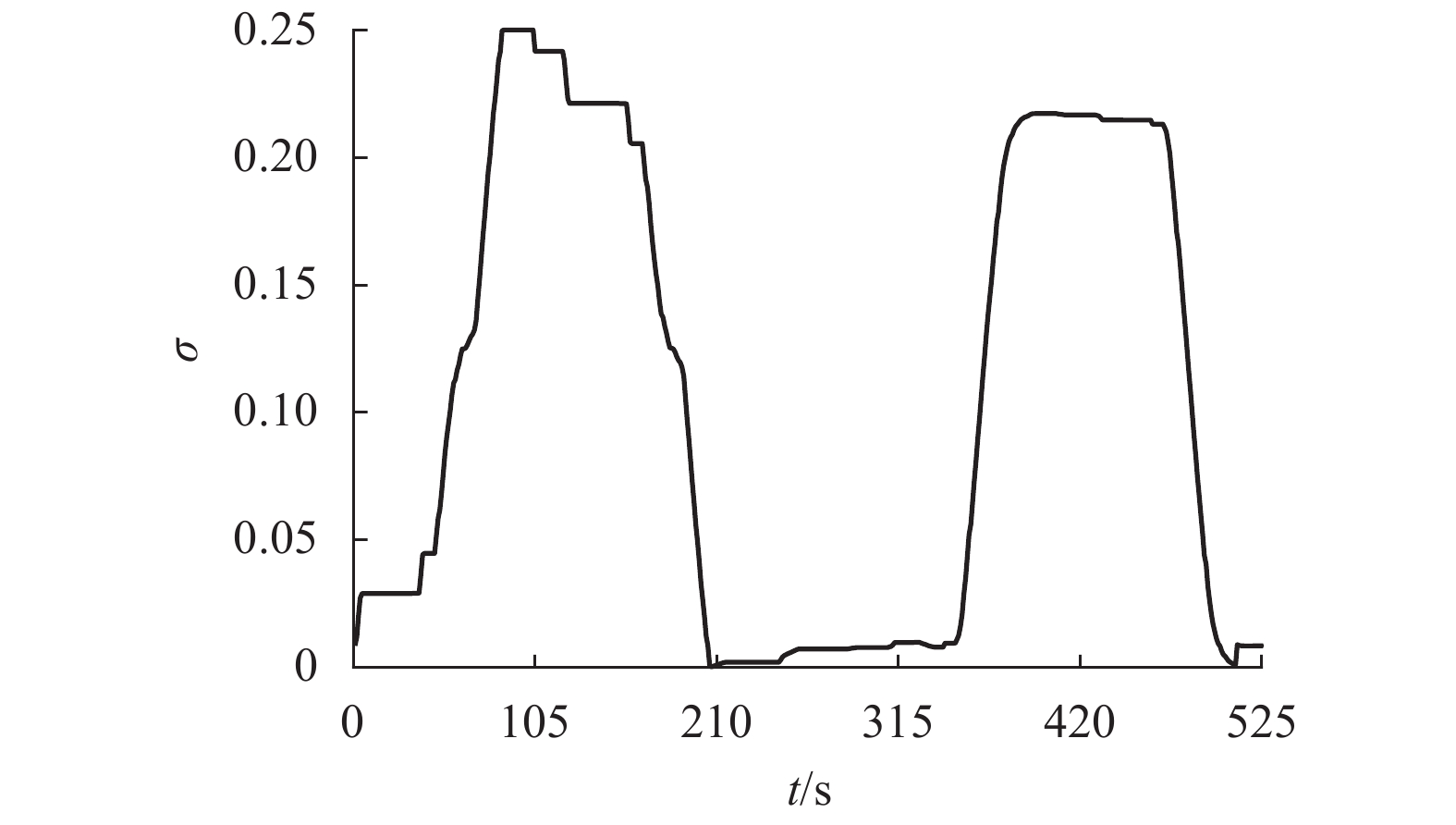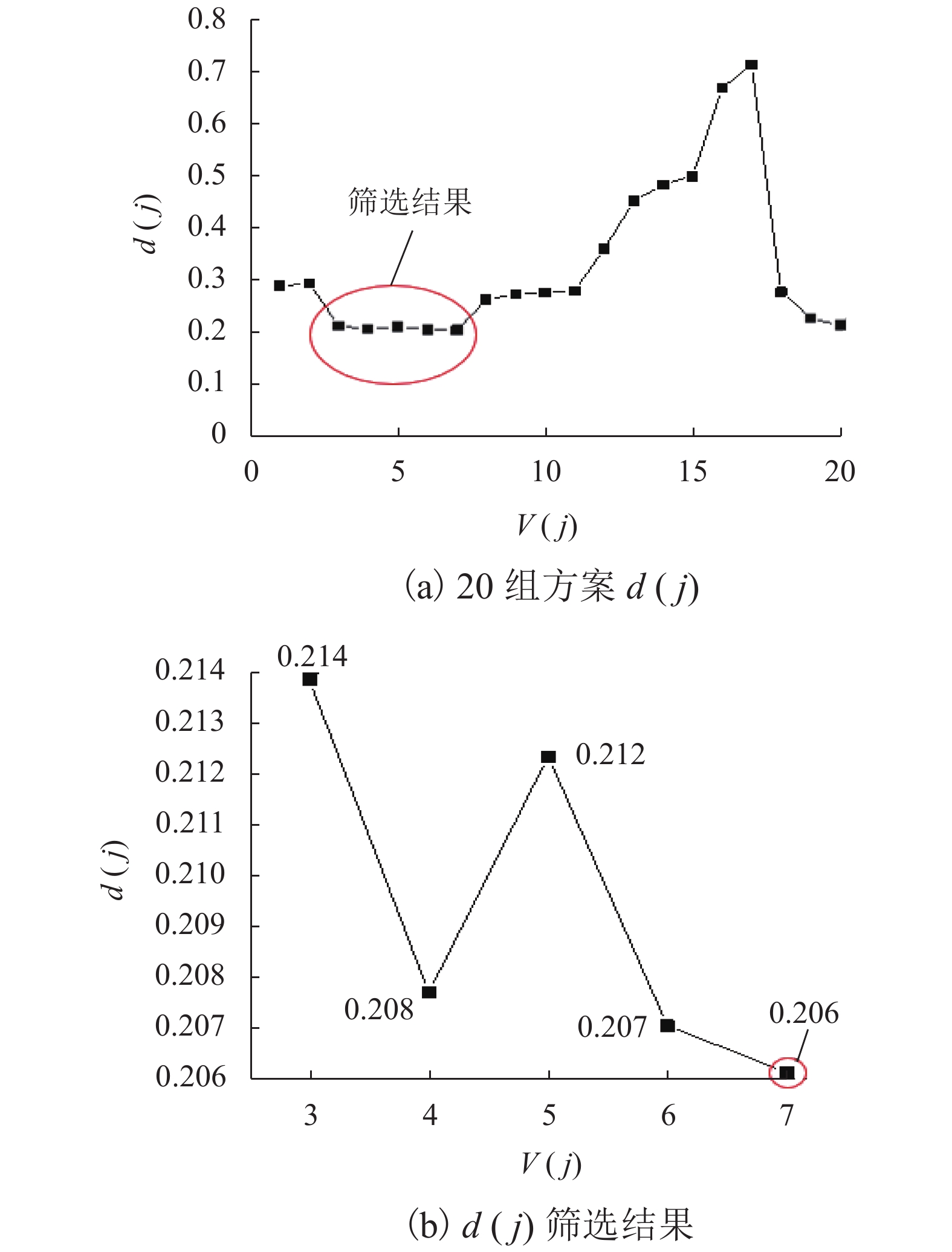Partition Heating Performance of Radiant Floor System in Railway Stations on Plateau
-
摘要:
为了解决高原铁路站房部分区域在强太阳辐射的影响下出现过热、地板辐射供暖系统能耗浪费的问题,以某高原铁路车站为研究对象,根据站房内太阳照射情况对地板辐射系统提出了分区供暖方案;利用建筑能耗模拟软件Energyplus对该铁路站房进行模拟分析,对比了地板辐射系统分区前后站房内的热环境和系统供暖量. 结果表明:地板辐射系统采用统一的设计及运行控制方案供暖时,站房内太阳直射影响区的平均操作温度在日间最高可达27 ℃,与非直射影响区之间的温差超过5 ℃;在地板辐射系统分区供暖时,直射影响区的平均操作温度最高为26 ℃,室内温度分布更为均匀,局部过热现象得到缓解;在保证站房热舒适性的前提下,地板辐射系统的分区供暖方案能够使直射影响区整个供暖季的供暖量降低38.2%.
Abstract:In order to solve the local overheating and the energy waste of radiant floor heating systems in railway stations on the plateau with intensive solar radiation, a railway station on the plateau was studied, and a partition heating scheme of the radiant floor system was proposed according to the solar radiation distribution in the station. The building energy consumption simulation software, namely Energyplus was used to simulate the station, and both the indoor thermal environment and the heating capacity of the radiant floor system with or without the partition scheme were compared. Results show that when the radiant floor system adopts a unified design and operation control scheme for heating, the average operative temperature in the irradiated zone can reach up to 27 ℃ during the daytime, and the temperature difference with the unirradiated zone is more than 5 ℃. When the radiant floor system uses the partition heating scheme, the maximum operative temperature in the irradiated zone is 26 ℃. The indoor temperature distribution is more uniform, and the local overheating is alleviated. Under the premise of ensuring the thermal comfort of the station, the partition heating scheme of the radiant floor system can reduce the heating capacity in the irradiated zone during the heating season by 38.2%.
-
逆变回馈装置不但可以有效利用城轨列车再生制动能量,还可以改善城轨牵引供电系统网压水平,近些年国内广泛投入使用[1-2]. 逆变回馈装置容量配置及安装位置是影响系统节能效果评估的重要因素,装置选址定容等问题是现阶段亟需解决的问题之一[3-4].
针对城轨再生制动能量利用装置定容选址的优化问题,是现阶段研究的热点. 文献[5]根据地铁列车全线对向行驶时供电臂和走行轨等效电阻的损耗功率最小对逆变回馈装置进行选址,由于实际全线牵引变电所数量多、计算量大,该法收敛速度较慢. 文献[6-7]考虑超级电容储能装置的节能电量与投资成本,同时优化装置能量管理策略控制参数,结合城轨供电仿真平台与遗传算法,实现了多目标同时优化. 多目标优化问题受各个目标量纲属性不同的影响,很难找到一组同时满足所有目标最优的解,通常存在一个Pareto最优解集,其各组非劣解之间互不支配,无法在优化任何目标的同时不削弱其他目标[8]. 这一多目标优化问题的求解思想常与智能算法结合以搜索非劣解集.
在利用遗传算法求解多目标优化问题上,相关文献展开了研究. 吴广宁等[9]在牵引变电所接地网优化设计上对传统遗传算法做出了改进,添加适应度函数并采用自适应算法根据适应度值动态调整交叉概率和变异概率,避免算法进入局部最优解. Deb等[10]为进一步提高遗传算法的计算效率和鲁棒性,在NSGA (non-dominated sorting genetic algorithm)的基础上提出了一种带精英策略的快速非支配排序遗传算法(fast NSGA-Ⅱ). 文献[11-12]验证了NSGA-Ⅱ相对传统遗传算法和并行粒子群算法具有计算精度高、收敛速度快的优点.
本文首先分析了含逆变回馈装置的系统级节能指标,并建立城轨逆变回馈装置定容选址多目标优化模型,其次将考虑逆变回馈装置周期性间歇工作制的城轨交直流混合潮流算法与NSGA-Ⅱ结合求解多目标函数的Pareto解集,采用基于信息熵的序数偏好法(technique for order preference by similarity to ideal solution,TOPSIS)归一化各目标函数值,计算相对理想距离,进而在Pareto解集中筛选出逆变回馈装置选址定容最优方案. 最后以广州某地铁线路为例进行仿真分析,验证算法有效性.
1. 优化模型
1.1 目标函数
从逆变回馈装置的投资成本以及逆变回馈装置对城轨牵引供电系统节能效果两个角度,建立逆变回馈装置定容选址优化模型.
1) 逆变回馈装置投资成本. 受地铁线路坡度及曲线信息影响,列车在各站间产生的再生制动能量不同,考虑逆变回馈装置经济投资因素,应在各牵引所安装不同容量的逆变回馈装置. 选择全线逆变回馈装置优化容量配置投资总成本的相反数作为目标函数f1(X),如式(1).
{f1(X)=−Nall∑i=1cEFS,i,X={xi}, (1) 式中:${c_{{\rm{EFS,}}i}}$为第i个牵引所内逆变回馈装置投资成本;Nall为全线逆变回馈装置投入总数量;X为全线各牵引所逆变回馈装置容量配置集合;xi为第i个牵引所内逆变回馈装置容量.
2) 系统级节能率. 全线不安装逆变回馈装置的城轨牵引供电系统作为参考系统,其系统能量流向如图1所示. 安装逆变回馈装置后,城轨牵引供电系统能量流向如图2所示.
图1中:WT1为全线牵引所牵引能耗之和;Wtrac为全线列车牵引总能耗;Wreg为全线再生制动总能量;$W_{{\rm{reg-trac}}}$为全线被邻车吸收再生制动能量之和;Wres为全线消耗在车载制动电阻上的再生制动能量之和. 图2中:WT2为全线牵引所牵引能耗之和;WF为全线被逆变回馈装置反馈再生制动能量之和;WR为返送主所逆功率;$W_{{\rm{reg-trac}}}'$为全线被邻车吸收再生制动能量之和;$W_{{\rm{res}}}' $为全线消耗在车载制动电阻上的再生能量之和.
全线牵引能耗及再生能量关系如式(2)、(3).
{Wtrac=WT1+Wreg−trac,Wres=Wreg−Wreg−trac; (2) {Wtrac=WT2+W′reg−trac,W′res=Wreg−W′reg−trac−WF. (3) 相对于参考系统,投入逆变回馈装置后全线车载制动电阻消耗的能量变化即为列车运行所节省的总电量W,如式(4).
W=Wres−W′res−WR=W′reg−trac−Wreg−trac+WF−WR=WT1−(WT2−WF)−WR. (4) 计及主所逆功率返送,WR未被城轨牵引供电系统利用,因此式(4)中没将WR计入总节省电量中.
定义投入逆变回馈装置后列车运行所节省的总电量与参考系统下全线牵引所输出能耗的比值为系统级节能率,选择其作为目标函数f2(X),如式(5).
f2(X)=WWT1×100%=WT1−(WT2−WF)−WRWT1×100%. (5) 综合考虑逆变回馈装置投资成本相反数以及系统级节能率,可表达为式(6)所示的城轨牵引供电系统逆变回馈装置定容选址多目标优化问题.
{maxV(j)={f1(X),f2(X)},s.t.X∈ε, (6) 式中:V(j)为优化目标,由子目标函数f1(x)和f2(x)组成,表示逆变回馈装置容量配置Pareto方案;j为方案数;X属于可行域ε,是以0.5 MW为步长的随机离散变量集合[13].
1.2 约束条件
求解上述多目标函数需满足逆变回馈装置容量、逆变回馈装置启动电压、整流机组空载电压和车载制动电阻启动电压的约束条件,如式(7).
{xmin⩽xi⩽xmax,Umin⩽Ui⩽Umax,Ud0,min⩽Ud0⩽Ud0,max,Ubr,min⩽Ubr⩽Ubr,max, (7) 式中:第i个牵引所的Ui为逆变回馈装置启动电压;Ud0为整流机组空载电压;Ubr为车载制动电阻启动电压;xmax和xmin分别为投入逆变回馈装置容量的上、下限值;Umax和Umin分别为逆变回馈装置启动电压的上、下限值;Ud0,max和Ud0,min分别为整流机组空载电压的上、下限值;Ubr,max和Ubr,min分别为车载制动电阻启动电压的上、下限值.
2. 基于NSGA-Ⅱ求解逆变回馈装置定容选址优化算法
2.1 城轨牵引供电系统交直流混合潮流算法
含逆变回馈装置的城轨交直流混合潮流计算以列车牵引计算信息和全日行车计划为计算条件,根据交直流供电系统拓扑结构建立直流侧节点电导矩阵和交流侧节点导纳矩阵,先进行直流侧潮流计算,收敛后更新牵引所运行状态,然后将直流侧电压参数收敛结果代入交流侧潮流计算,直至交流侧电压收敛. 其中,算法的可靠性以及控制策略改进分别在文献[14-15]中验证. 本文在上述算法基础上考虑了国标《城市轨道再生制动能量吸收逆变装置》(GB/T 37423—2019)规定的逆变回馈装置周期性间歇工作制[13],以120 s为工作周期,占空比为0.25,矩形工作制如图3所示. 图中:Ir为逆变回馈装置周期性间歇工作峰值电流.
计算120 s内逆变回馈装置吸收电流的有效值,如式(8).
IRMS=√T∑t=1It2/120, (8) 式中:It为逆变回馈装置在时刻t吸收的直流电流;T为逆变回馈装置运行时间.
则120 s内逆变回馈装置的占空比σ计算如式(9).
σ=(IRMSIr)2. (9) 在交直流混合潮流算法中,根据式(9)对牵引所逆变回馈装置直流侧的电流进行限制,确保每120 s时间周期内逆变回馈装置工作占空比在0.25以内.
2.2 NSGA-Ⅱ算法优化逆变回馈装置定容选址
NSGA-Ⅱ算法首先根据个体之间的支配关系对N组种群进行非支配排序分层,经选择、交叉和变异获得第一代子种群;然后在传统NSGA算法基础上将父代种群与子代种群合并进行快速非支配排序,同时对每个非支配层中的个体进行拥挤距离计算,从而筛选出新的优质父代种群;最后逐次迭代直至达到迭代收敛条件或最大迭代次数,输出结果为Pareto最优解集.
针对所提逆变回馈装置定容选址多目标优化问题,在城轨牵引供电仿真系统[16]模拟列车运行工况、牵引计算、交直流混合潮流计算,得到牵引所整流机组输出能耗、逆变回馈装置反馈能量等牵引供电系统参数,进而求解目标函数. 采用交直流混合潮流算法与NSGA-Ⅱ结合求解流程如图4所示. 图中:g为迭代次数;VP(j)和VQ(j)分别为父代方案和子代方案.
图4中,初始父代种群是以0.5 MW为步长,随机产生的N组逆变回馈装置容量配置方案;G为最大迭代次数;J为交叉概率;B为变异概率;Z为整流机组额定功率;Pt和Qt分别为时刻t的父代和子代容量配置.
3. 基于信息熵的TOPSIS法最优解选取
由于上述Pareto解集的每组解具有两个量纲属性,无法在N组Pareto解集中挑选出一组最优解. 为防止决策者偏好影响最优解选取,本文采用基于信息熵的TOPSIS将f1(X)和f2(X)无量纲属性归一化处理,在N组Pareto解集中筛选出与理想方案相对距离最小、与负理想方案相对距离最大的逆变回馈装置定容选址最优方案[17]. 其中,通过信息熵赋予Pareto解集中各目标函数值的影响权重,权值大小反应了该目标函数值对最优解选取的影响程度[18].
累和归一化与向量归一化方法均不会改变目标函数的原始值属性[19],考虑本文目标函数f1(X)值为负数,因此采用累和归一化方法,如式(10).
f′m(X)=fm(X)n∑m=1fm(X), (10) 式中:fm(X)为方案V(j) 归一化处理前的第m个目标函数原始值;n为目标函数个数;$f_m' (X)$为归一化目标函数值.
子目标函数的信息熵计算如式(11).
E(m)=−KN∑j=1[f′m(X)lnf′m(X)], (11) 式中:E(m)为第m个子目标函数信息熵;熵系数K=1/ln m;当$f_m' (X)$为0时,令ln $f_m' (X) $为0.
子目标函数权重计算如式(12).
εm=1−E(m)n∑m=1(1−E(m)), (12) 式中:εm为第m个子目标函数的权重,0 < εm < 1,且ε1+ε2+···+εm=1.
根据$f_m' (X) $求解方案V(j)的信息熵以及权重得到V(j)的归一化相对理想距离d(j),如式(13).
d(j)=d+(j)d+(j)+d−(j), (13) 式中:d+(j)为优化方案V(j)到理想方案归一化相对距离;d−(j)为优化方案V(j)到负理想方案归一化相对距离.
d(j)值越小则V(j)越接近理想方案.
4. 算例分析
4.1 仿真模型
以广州某地铁线路一期工程进行算例仿真,该系统设有两座主变电所、10座牵引所,线路自西向东Sub1~Sub9共9个车站,全长26 km,除Sub7处为降压所外,其余车站均设有牵引所,另两座区间牵引所位置如图5,各牵引所位置信息如表1.
表 1 牵引所位置信息Table 1. Traction station position information牵引所 位置/km 牵引所 位置/km Sub1 0.243 Sub6 13.900 Sub2 2.456 区间所 1 16.287 Sub3 4.568 区间所 2 20.527 Sub4 7.804 Sub8 23.322 Sub5 10.670 Sub9 25.685 设计考虑列车初期行车计划:运营时间段为06:30~23:30,共17 h;期间发车间隔为525 s,共发车117对;列车车型为6B,4动2拖. 设置仿真参数如表2,逆变回馈装置容量与投资成本满足关系如图6所示.
表 2 仿真参数设置Table 2. Simulation parameter setting仿真参数 取值 仿真参数 取值 N 20 Z/MW 2×2.5 J 0.9 Ud0/V 1680 B 0.1 xmax/MW 3 G/次 100 Ui/V 1720 WT1/(kW•h) 3954.17 Ubr/V 1830 4.2 优化过程
计算每次迭代Pareto解集的归一化相对理想距离并筛选出各次迭代的最优方案,其目标函数值收敛过程如图7,在迭代至30次左右时,最优方案的目标函数值基本收敛. 表3统计了收敛后目标函数的Pareto解集,图8(a)是Pareto收敛解集方案的归一化相对理想距离变化情况,图8(b)在方案3~7中筛选出d(j)最小的V(7)作为该线路逆变回馈装置定容选址的最优方案. 表4统计了V(7)的潮流计算结果,由式(5)可得系统级节能率为17.94%.
表 3 Pareto解集收敛结果Table 3. Convergence results of Pareto solution setV(j) f1(X)/
(×102 万元)f2(X)/% V(j) f1(X)/
(×102 万元)f2(X)/% 1 −3.30 9.54 11 −7.30 19.81 2 −3.60 9.55 12 −8.60 20.28 3 −4.00 14.03 13 −10.10 20.46 4 −4.20 14.53 14 −10.70 20.86 5 −5.30 16.15 15 −11.10 21.48 6 −5.40 16.66 16 −14.90 21.68 7 −5.80 17.94 17 −16.80 21.7 8 −6.70 17.79 18 −6.90 17.61 9 −6.90 17.95 19 −6.20 18.05 10 −7.10 18.85 20 −5.80 17.39 为验证该优化方案的逆变回馈装置能满足周期性间歇工作制,以区间所2为例,统计牵引所直流电流如图9所示. 计算525 s发车间隔下该牵引所逆变回馈装置的工作占空比(σ),如图10所示.
4.3 优化方案对比
将筛选出的最优逆变回馈装置定容选址方案V(7)与该地铁工程实际安装逆变回馈装置方案Va统计如表5,其目标函数值计算结果如表6,投资回报周期计算如式(14).
表 5 逆变回馈装置方案对比Table 5. Scheme comparison of inverter feedback devicesMW 牵引所 V(7),Va 牵引所 V(7),Va Sub1 0,2.0 Sub6 0,0 Sub2 2.0,0 区间所 1 0,0 Sub3 0,0 区间所 2 2.0,0 Sub4 1.5,0 Sub8 0,2.0 Sub5 0,0 Sub9 0,3.0 表 6 不同优化方案目标函数值对比Table 6. Comparison of objective function values of different optimization schemes优化方案 f1(X)/(×102万元) f2(X)/% V(7) 5.80 17.94 Va 6.50 14.69 表 4 最优方案V(7)每小时潮流计算结果Table 4. Hourly power flow calculated by optimal scheme V(7)kW•h 牵引所 WT2 WF WR Sub1 275.97 0 45.66 Sub2 459.14 270.84 Sub3 499.08 0 Sub4 501.06 238.75 Sub5 473.03 0 Sub6 292.77 0 区间所 1 321.41 0 区间所 2 462.30 273.07 Sub8 416.51 0 Sub9 280.59 0 合计 3981.86 782.66 45.66 c=−f1(X)cmWD×106, (14) 式中:c为投资回报周期,a;cm为地铁用电单价;D为线路全年运营天数;f1(X)单位为102万元.
从表6可以看出:本文所提逆变回馈装置优化方案V(7)对于该地铁工程实际配置方案Va可以节省逆变回馈装置投资成本70万元,系统级节能率提高3.25%,按0.75元/(kW•h)电价计算,投资回报周期缩短236 d.
由于线路牵引所Sub7~Sub8站间距离长,列车制动频繁,优化算法搜索出在区间牵引所2装设逆变回馈装置的方案,且线路端头所处列车制动能量相对较少,安装逆变回馈装置节能效益不高,因此建议在该地铁线路Sub2和Sub4处的牵引所分别安装容量为2.0 MW和1.5 MW的逆变回馈装置,并在区间所2处安装容量为2.0 MW的逆变回馈装置.
5. 结 论
1) 本文将NSGA-Ⅱ与城轨交直流混合潮流算法结合对广州某地铁线路逆变回馈装置定容选址多目标优化模型进行求解,迭代30次得到Pareto收敛解集. 采用基于信息熵的TOPSIS归一化目标函数值,通过比较d(j)筛选出在牵引所Sub2、Sub4和区间所2装设容量为2.0、1.5 MW和2.0 MW的逆变回馈装置优化方案.
2) 将优化方案与该地铁工程实际逆变回馈装置配置方案进行对比,逆变回馈装置投资成本节省70万元,系统级节能率提高3.25%,投资回报周期相应缩短.
3) 该算例采用B型列车按初期发车计划运行,发车间隔大,线路车辆稀疏,产生的制动能量较少,因此逆变回馈装置投入数量不需过多. 对于不同地铁线路,本文所述优化方法均能有效进行逆变回馈装置定容选址,提高再生制动能量利用率并缩短投资回报周期.
-
表 1 地板各层材料的热物性参数
Table 1. Thermal properties of floor materials
各层材料 厚度/
mm热导率
/
(W·m−1·K−1)密度
/
(kg·m−3)热容
/
(J·kg−1·K−1)大理石 30 3.84 2600 750 水泥
砂浆20 0.93 1800 840 轻质混
凝土70 1.84 2344 800 挤塑板 50 0.03 35 1380 混凝土
楼板120 1.55 2700 837 表 2 该铁路车站候车厅内的热扰参数
Table 2. Thermal disturbances in waiting hall of railway station
热扰 取值 设置区域 人员 2000 人 人员活动区 灯光 10 W/m2 非人员活动区 设备 15 W/m2 人员活动区 渗透风 1 次/h 所有区域 新风 10 m3/(h·人) 人员活动区 表 3 各地区供暖季平均室外干球温度及累积太阳辐射
Table 3. Outdoor dry bulb temperature and cumulative solar radiation in several regions during heating season
地点 平均室外干
球温度/℃累积太阳
辐射/(kWh·m−2)拉萨 0.8 749.2 林芝 2.7 632.5 昌都 −0.2 624.4 理塘 −3.6 493.6 甘孜 −1.6 601.2 马尔康 1.5 418.9 松潘 −1.7 381.8 表 4 不同地区车站的候车厅直射影响区在分区供暖方案下的供暖量减少情况
Table 4. Reduction in heating capacities of irradiated zones of waiting halls in different regions
地点 供暖减少
量/(kWh·m−2)供暖减少
百分比/%拉萨 15.8 38.2 林芝 12.4 33.1 昌都 12.5 24.8 理塘 8.9 13.7 甘孜 12.6 22.1 马尔康 7.2 14.1 松潘 6.2 9.0 -
[1] 清华大学建筑节能研究中心. 中国建筑节能年度发展研究报告2018[M]. 北京: 中国建筑工业出版社, 2018. [2] 刘晓华, 张涛, 戎向阳. 交通场站建筑热湿环境营造[M]. 北京: 中国建筑工业出版社, 2019. [3] QIAN B, YU T, BI H Q, et al. Measurements of energy consumption and environment quality of high-speed railway stations in China[J]. Energies, 2019, 13(1): 168.1-168.22. [4] ZHAO K, LIU X, JIANG Y. On-site measured performance of a radiant floor cooling/heating system in Xi’an Xianyang International Airport[J]. Solar Energy, 2014, 108: 274-286. doi: 10.1016/j.solener.2014.07.012 [5] 王吉进. 高大空间建筑不同供暖末端方式的耗热量研究[D]. 哈尔滨: 哈尔滨工业大学, 2017. [6] 蔡德源,许志浩. 高大建筑空间采暖方式的分析[J]. 西南交通大学学报,2002,37(3): 269-272.CAI Deyuan, XU Zhihao. Analysis of heating methods for high and large building spaces[J]. Journal of Southwest Jiaotong University, 2002, 37(3): 269-272. [7] ZHANG T, LIU X, ZHANG L, et al. Performance analysis of the air-conditioning system in Xi’an Xianyang International Airport[J]. Energy and Buildings, 2013, 59: 11-20. doi: 10.1016/j.enbuild.2012.12.044 [8] ZHAO K, WENG J, GE J. On-site measured indoor thermal environment in large spaces of airports during winter[J]. Building and Environment, 2020, 167: 106463.1-106463.13. [9] LIU X, LIN L, LIU X, et al. Evaluation of air infiltration in a hub airport terminal: on-site measurement and numerical simulation[J]. Building and Environment, 2018, 143: 163-177. doi: 10.1016/j.buildenv.2018.07.006 [10] LIU X, LIU X, ZHANG T. Influence of air-conditioning systems on buoyancy driven air infiltration in large space buildings: a case study of a railway station[J]. Energy and Buildings, 2020, 210: 109781.1-109781.14. [11] 刘大龙,刘加平,张习龙,等. 青藏高原气候条件下的建筑能耗分析[J]. 太阳能学报,2016,37(8): 2167-2172.LIU Dalong, LIU Jiaping, ZHANG Xilong, et al. Building energy consumption analysis in climatic condition of Tibetan Plateau[J]. Acta Energiae Solaris Sinica, 2016, 37(8): 2167-2172. [12] 薛明珠. 低温地板辐射供暖在高海拔寒冷地区大空间建筑中的适用性研究[D]. 重庆: 重庆大学, 2016. [13] ATHIENITIS A K. Investigation of thermal performance of a passive solar building with floor radiant heating[J]. Solar Energy, 1997, 61(5): 337-345. doi: 10.1016/S0038-092X(97)00077-7 [14] ATHIENITIS A K, CHEN Y. The effect of solar radiation on dynamic thermal performance of floor heating systems[J]. Solar Energy, 2000, 69(3): 229-237. doi: 10.1016/S0038-092X(00)00052-9 [15] 陈辰,雷波. 太阳辐射影响下地板辐射供暖传热特性研究[J]. 制冷与空调,2021,35(4): 527-531.CHEN Chen, LEI Bo. Study on heat transfer characteristics of floor radiant heating under the influence of solar radiation[J]. Refrigeration & Air Conditioning, 2021, 35(4): 527-531. [16] BEJI C, MERABTINE A, MOKRAOUI S, et al. Experimental study on the effects of direct Sun radiation on the dynamic thermal behavior of a floor-heating system[J]. Solar Energy, 2020, 204: 1-12. doi: 10.1016/j.solener.2020.04.055 [17] LI T, MERABTINE A, LACHI M, et al. Experimental study on the thermal comfort in the room equipped with a radiant floor heating system exposed to direct solar radiation[J]. Energy, 2021, 230: 120800.1-120800.13. [18] 王登甲. 间歇采暖太阳能建筑热过程及设计优化研究[D]. 西安: 西安建筑科技大学, 2012. [19] 王登甲,刘艳峰,刘加平. 间歇采暖太阳能建筑设计及运行优化研究[J]. 西安建筑科技大学学报(自然科学版),2012,44(5): 720-725. doi: 10.15986/j.1006-7930.2012.05.026WANG Dengjia, LIU Yanfeng, LIU Jiaping. Study on the design and operation optimization of intermittent solar heating building[J]. Journal of Xi’an University of Architecture & Technology (Natural Science Edition), 2012, 44(5): 720-725. doi: 10.15986/j.1006-7930.2012.05.026 [20] 中华人民共和国住房和城乡建设部. 公共建筑节能设计标准: GB 50189—2015[S]. 北京: 中国建筑工业出版社, 2015. [21] ZHOU J, YU T, WU H, et al. A dynamic model of hollow ventilated interior wall integrated with solar air collector[J]. Applied Thermal Engineering, 2020, 175: 115380.1-115380.12. [22] ISO. Ergonomics of the thermal environment Analytical determination and interpretation of thermal comfort using calculation of the PMV and PPD indices and local thermal comfort criteria: ISO 7730[S]. Geneva: ISO Standardization, 2005. [23] WANG Y, WONG K K L, DU H, et al. Design configuration for a higher efficiency air conditioning system in large space building[J]. Energy and Buildings, 2014, 72: 167-176. doi: 10.1016/j.enbuild.2013.12.041 [24] PENG S, YU J H, GANG W J, et al. Study on load characteristics of different air conditioning systems in large space railway station[J]. IOP Conference Series: Earth and Environmental Science, 2019, 238: 012038.1-012038.12. [25] 陆耀庆. 实用供热空调设计手册[M]. 北京: 中国建筑工业出版社, 2008. [26] 国家铁路局. 铁路旅客车站设计规范: TB 10100—2018[S]. 北京: 中国铁道出版社, 2018. [27] 中国气象局气象信息中心气象资料室, 清华大学建筑技术科学系. 中国建筑热环境分析专用气象数据集[M]. 北京: 中国建筑工业出版社, 2005. -






 下载:
下载:










 下载:
下载:














